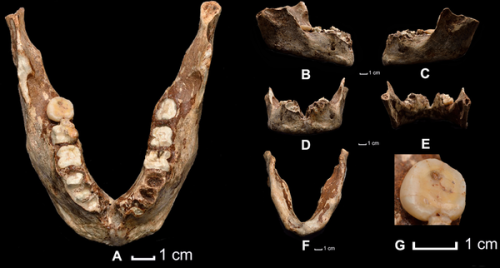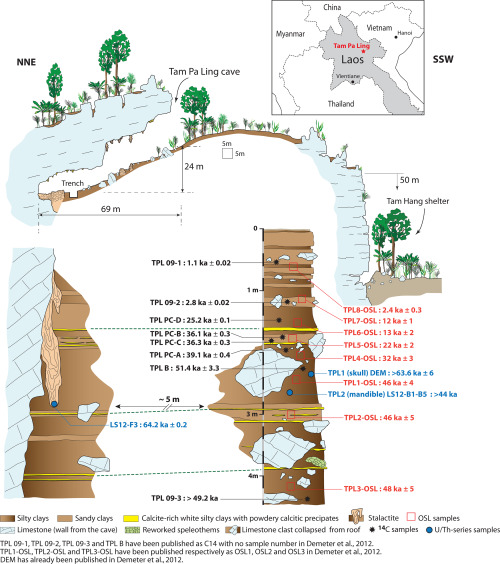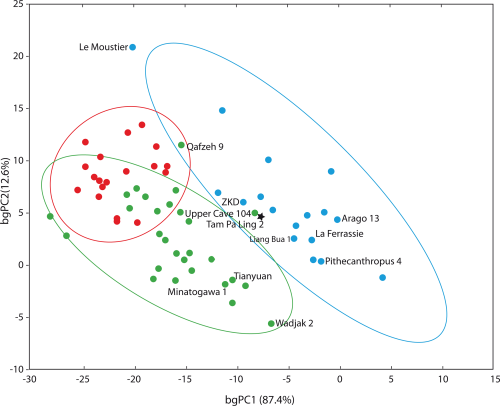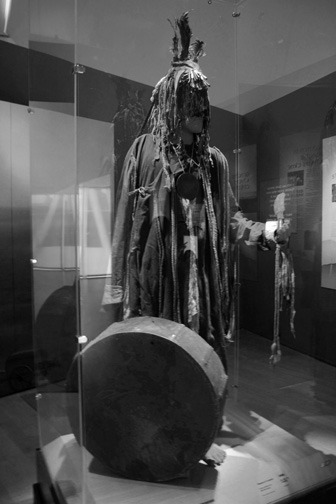#eurasia
- by Fabrice Demeter , Laura Shackelford, Kira Westaway, Philippe Duringer, Anne-Marie Bacon, Jean-Luc Ponche, Xiujie Wu, Thongsa Sayavongkhamdy, Jian-Xin Zhao, Lani Barnes, Marc Boyon, Phonephanh Sichanthongtip, Frank Sénégas, Anne-Marie Karpoff, Elise Patole-Edoumba, Yves Coppens and José Braga
“Little is known about the timing of modern human emergence and occupation in Eastern Eurasia. However a rapid migration out of Africa into Southeast Asia by at least 60 ka is supported by archaeological, paleogenetic and paleoanthropological data. Recent discoveries in Laos, a modern human cranium (TPL1) from Tam Pa Ling‘s cave, provided the first evidence for the presence of early modern humans in mainland Southeast Asia by 63-46 ka. In the current study, a complete human mandible representing a second individual, TPL 2, is described using discrete traits and geometric morphometrics with an emphasis on determining its population affinity. The TPL2 mandible has a chin and other discrete traits consistent with early modern humans, but it retains a robust lateral corpus and internal corporal morphology typical of archaic humans across the Old World. The mosaic morphology of TPL2 and the fully modern human morphology of TPL1 suggest that a large range of morphological variation was present in early modern human populations residing in the eastern Eurasia by MIS 3″ (read more/open access).
(Open access source: PLoS ONE 10(4): e0121193, 2015)
Post link

Eurasia, North Africa//Conservation Status Unknown//Lepidoptera// photo source
Fun Fact: The hummingbird hawk moth has a wingspan of up to 45mm (almost 2 inches)
Tengriism had a central place in historical Turkic societies from the eastern borders of Asia to Central Europe. Even though the word “Tanrı” (God) took such forms as “tangara” with the Yakuts, “teri” with the Kazan Turks, “ter" with the Soyons and “tenggeri” with the Mongols, it retained to present day its fundamental form in every religious system accepted by Turkic peoples.
Tengriism holds the belief of Tanrı being in the sky, which covers the world and governs everything and hence as a Sky-God, the Creator and the Absolute Power. Political power and sovereignty has its origin in God. There were no temples, pictures or statues for the Sky-God, who is ancient and eternal and has no human characteristics. It gives luck and power to the Khans, on whom the organization of society, and the destiny of people depend.
Ancient Turks also considered Earth-Water (Yer-Sub) sacred. The belief in “Yer-Sub” related to the mountains, forests, rivers, etc. and this later transformed into a “Cult of Homeland.” Through history, the Turks also respected fire and saw within it a cleansing and sacred power. The cult of fire among the Turks is closely related to “the cult of family hearth” which in turn is related to “the cult of the ancestor.” The term “Yer-Sub” (Earth-Water) implies that in addition to trees, fire, water, mountains, the earth, rocks and stones have a sacred meaning and importance. In the Orkhon inscriptions, “the blue sky” and “the black earth” form the two main cosmic fields and complement each other. (x)
Post link
Eurasia exhibition last year of Taiyo Onorato & Nico Krebs at Fotomuseum Winterthur
love the poster! great show as well!
Post link










